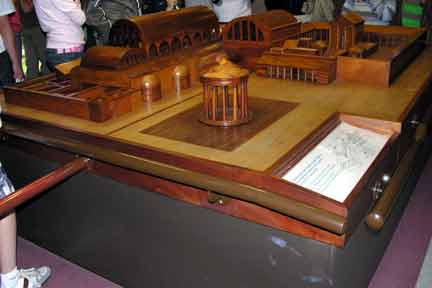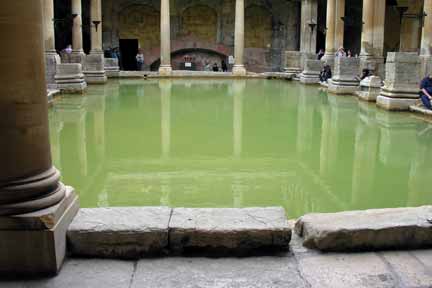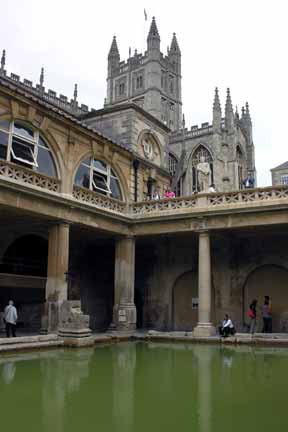
Roman Baths, England

The natural hot spring was a shrine of the Celtic Brythons dedicated to their Goddess Sulis, which the Romans upon their invasion and occupation of Britain named Aquae Sulis (waters of Sulis). |

|
Roman Baths, England |

|
The Romans built a bathing complex and temple around Britain's only hot spring, identified the Celtic Goddess Sulis with their Goddess Minerva and encouraged the Celts to worship her. |

This model of the Roman Bath Complex and the Temple of Minerva as it would have appeared in 400 A.D. is located in one of the rooms in the excavated Roman Baths, which are below present day street level in the World Heritage Site. |

The Great Bath is only one section of the Roman Baths, which had rooms with different functions including one with a heated floor off the various doorways along the perimeter of the Great Bath. |

This picture was photographed from the present day street level looking down into the Great Bath area and the statues that adorn the now upper level where placed by the English centuries after the fall of the Roman Empire. |

The photograph above shows a small portion of the beautiful Bath Abbey, or the Abbey Church of Saint Peter and Saint Paul, which is an Anglican parish church founded in the seventh century and rebuilt in the twelfth and sixteenth centuries and seats twelve hundred people. |